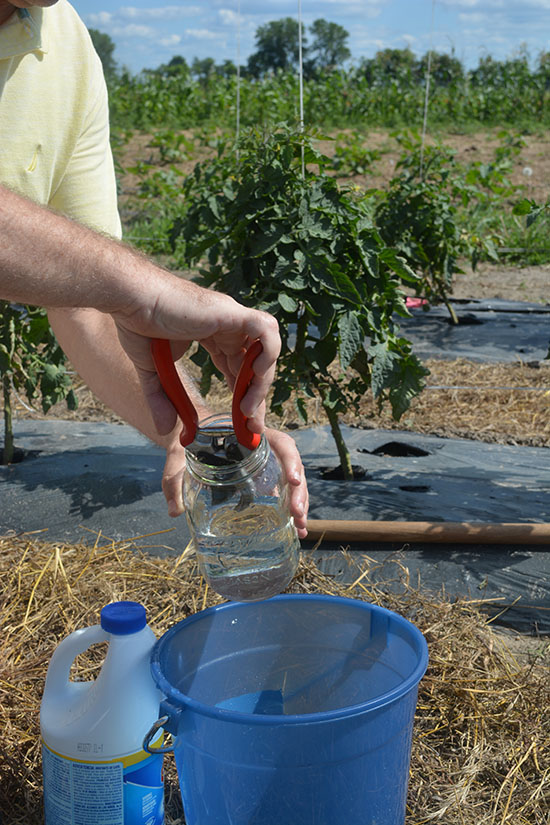Issue 3, May 14, 2018
Keeping It Clean
Tool sanitation isn't something we typically think about, but as we go from yard to yard with our equipment, we can pick up some unwanted guests. These guests can be as simple as weed seeds, insects, or as complex as fungal diseases. Pruning tools can carry or harbor plant diseases like fire blight, Dutch elm disease, and boxwood blight. Since we don't want to spread these diseases, a cleaning routine needs to be a priority.
There are many household disinfectants readily available for tool sanitation. These products have been proven effective on indoor pathogens in the home, but not necessarily with plant pathogens. Household disinfectants include products such as Lysol. Most can be purchased cheaply and safely used on pruning tools. They also tend to be less corrosive than other cleaners that we will discuss. However, limited research has been done with these types of products, so use them with caution since you might not be getting everything clean.

Chlorine bleach is inexpensive, effective, and even found in convenient handy wipes. Much like household disinfectants, bleach has its disadvantages and advantages for use. Bleach is an oxidizing agent meaning that it is very corrosive. Repeated use on pruning tools will cause pitting. These pits will be great places for pathogens to reside and may leave the blades weaker. Bleach has harmful fumes and can cause asthma flare-ups and aggravate other lung conditions. One of the more notable drawbacks to using bleach is that it can ruin clothing.
Alcohol (ethanol or isopropyl) can be used as a wipe to sanitize your tools. This product is nice in that you do not need to soak or mix a solution in order to use. It does not have to be wiped away or rinsed and it is effective immediately. The concentration of alcohol should be 70-100% to use as a disinfectant. Alcohol is very flammable so do take caution if using near a heat source. They are available in a variety of stores for a variety of prices.
Steam or Dry heat method means heating your tools to 180-200 F for 30 minutes under a cover to maintain the temperature. This will kill off any bacteria, fungi, insect, nematode or weed seeds. However, this method may not be practical or easy to do without the proper equipment.
There are many types of commercial disinfectants used in the horticulture industry. There are quaternary ammonium compounds, commonly called "quats" or "q-salts", used to control fungal, bacterial, and viral plant pathogens. Products include Green-Shield® and KleenGrow™. There are also hydrogen dioxides, which are labeled as a disinfectant for use on greenhouse surfaces, equipment, tools, and for use on plants. Products include ZeroTol® 2.0 and terraclean®. Follow the label for directions of use. Most do require that you rinse tools to prevent corrosion of metal.
Before disinfecting, all tools or equipment need to be free of dirt and debris. This allows the disinfectant to reach the cutting surface and any crevices. Whichever solution or product you choose to use, make sure that the container has a large opening for the tools you want to dip inside or have rags available to be able to wipe excess cleaner from the tools.
Now that you are armed with a variety of choices for cleaning your gardening tools, choose a disinfectant that will be effective, affordable and safe to handle. Be sure to clean dirt and debris from the tools prior to disinfecting. Clean your tools in between plants, and if a plant is diseased, it is also best to disinfect in-between pruning cuts. It is a good practice to have multiple pruners for homes or landscapes so that you can rotate through your tools and reduce the risk of corrosion or contamination. Having good sanitation practices will allow for health plants wherever you work. (Maria Turner)
http://gardeningsolutions.ifas.ufl.edu/care/tools-and-equipment/disinfecting-tools.html
https://extension.psu.edu/disinfecting-tools-equipment-pots-flats-and-benches
Author:
Maria Turner